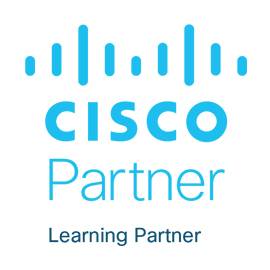
Implementing and Operating Cisco Collaboration Core Technologies
[2024] 9-13 Sep / 4-8 Nov
5 Days
COURSE CONTENT
The Implementing and Operating Cisco Collaboration Core Technologies (CLCOR) v1.0 course helps you prepare for advanced-level roles focused on implementation and operation of Cisco collaboration solutions. You will gain the knowledge and skills needed to implement and deploy core collaboration and networking technologies, including infrastructure and design, protocols, codecs, and endpoints, Cisco Internetwork Operating System (IOS®) XE gateway and media resources, call control, Quality of Service (QoS), and additional Cisco collaboration applications.
This course will help you learn to use Cisco SD-WAN to:
- Integrate and troubleshoot Cisco Unified Communications Manager with Lightweight Directory Access Protocol (LDAP) for user synchronization and user authentication
- Implement Cisco Unified Communications Manager provisioning features
- Configure and troubleshoot collaboration endpoints
COURSE OBJECTIVE
- Describe the Cisco Collaboration solutions architecture
- Compare the IP Phone signaling protocols of Session Initiation Protocol (SIP), H323, Media Gateway Control Protocol (MGCP), and Skinny Client Control Protocol (SCCP)
- Integrate and troubleshoot Cisco Unified Communications Manager with LDAP for user synchronization and user authentication
- Implement Cisco Unified Communications Manager provisioning features
- Describe the different codecs and how they are used to transform analogue voice into digital streams
- Describe a dial plan, and explain call routing in Cisco Unified Communications Manager
- Implement Public Switched Telephone Network (PSTN) access using MGCP gateways
- Implement a Cisco gateway for PSTN access
- Configure calling privileges in Cisco Unified Communications Manager
- Implement toll fraud prevention
- Implement globalized call routing within a Cisco Unified Communications Manager cluster
- Implement and troubleshoot media resources in Cisco Unified Communications Manager
- Describe Cisco Instant Messaging and Presence, including call flows and protocols
- Describe and configure endpoints and commonly required features
- Configure and troubleshoot Cisco Unity Connection integration
- Configure and troubleshoot Cisco Unity Connection call handlers
- Describe how Mobile Remote Access (MRA) is used to allow endpoints to work from outside the company
- Analyze traffic patterns and quality issues in converged IP networks supporting voice, video, and data traffic
- Define QoS and its models
- Implement classification and marking
- Configure classification and marking options on Cisco Catalyst® switches
COURSE OUTLINE
- Describing the Cisco Collaboration Solutions Architecture
- Exploring Call Signaling over IP Networks
- Integrating Cisco Unified Communications Manager LDAP
- Implementing Cisco Unified Communications Manager Provisioning Features
- Exploring Codecs
- Describing Dial Plans and Endpoint Addressing
- Implementing MGCP Gateways
- Implementing Voice Gateways
- Configuring Calling Privileges in Cisco Unified Communications Manager
- Implementing Toll Fraud Prevention
- Implementing Globalized Call Routing
- Implementing and Troubleshooting Media Resources in Cisco Unified Communications Manager
- Describing Cisco Instant Messaging and Presence
- Enabling Cisco Jabber®
- Configuring Cisco Unity Connection Integration
- Configuring Cisco Unity Connection Call Handlers
- Describing Collaboration Edge Architecture
- Analyzing Quality Issues in Converged Networks
- Defining QoS and QoS Models
- Implementing Classification and Marking
- Configuring Classification and Marking on Cisco Catalyst Switches
Lab outline
- Using Certificates
- Configure IP Network Protocols
- Configure and Troubleshoot Collaboration Endpoints
- Troubleshoot Calling Issues
- Configure and Troubleshoot LDAP Integration in Cisco Unified Communications Manager
- Deploy an IP Phone Through Auto and Manual Registration
- Configure Self-Provisioning
- Configure Batch Provisioning
- Explore the Cisco VoIP Bandwidth Calculator
- Configure Regions and Locations
- Implement Endpoint Addressing and Call Routing
- Implement PSTN Calling Using MGCP Gateways
- Configure and Troubleshoot Integrated Services Digital Network (ISDN) Primary Rate Interface (PRI)
- Examine Cisco IOS Gateway Inbound and Outbound Dial-Peer Functions
- Implement and Troubleshoot Digit Manipulation on a Cisco IOS Gateway
- Configure Calling Privileges
- Implement Toll Fraud Prevention on Cisco Unified Communications Manager
- Implement Globalized Call Routing
- Deploy an On-Premise Cisco Jabber Client for Windows
- Configure the Integration Between Unity Connection and Cisco UCM
- Manage Unity Connection Users
- EAI: Configure QOS
WHO SHOULD ATTEND
- Working knowledge of fundamental terms of computer networking, including LANs, WANs, switching, and routing
- Basics of digital interfaces, Public Switched Telephone Networks (PSTNs), and Voice over IP (VoIP)
- Fundamental knowledge of converged voice and data networks and Cisco Unified Communications Manager deployment
PREREQUISITE
- Students preparing to take the CCNP Collaboration certification
- Network administrators
- Network engineers
- Systems engineers
